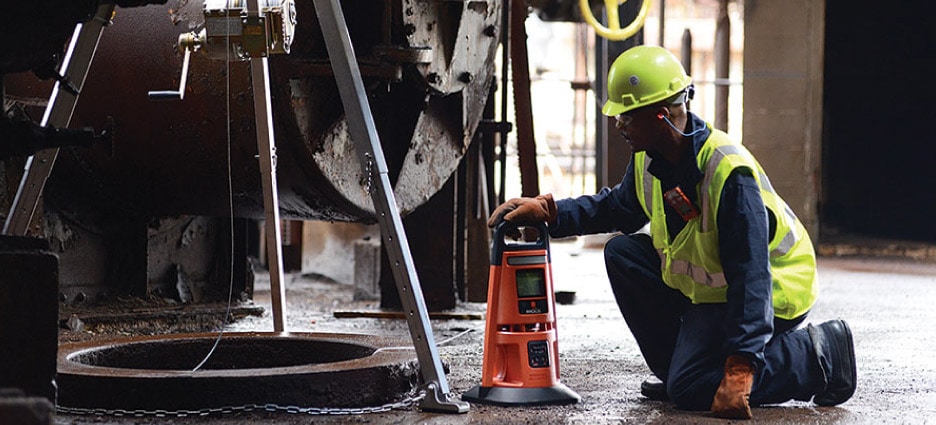What are Confined Spaces? (Hazards, Precautions and Safety)
From 2011 to 2018, approximately 1,030 workers were killed due to injuries related to confined spaces. Working in these spaces always carries a significant degree of danger. Due to the inherent risks, activities in confined spaces require proper permits and safety training. There are fundamental factors that every supervisor and confined space worker should consider before starting work in these environments
The expression “confined space” has a wide application throughout the business. In numerous occurrences Confined spaces are genuinely self-evident, for instance, response vessels, encased tanks, huge conduits, and sewer pipelines.
Understanding Confined Spaces
Besides the ones that are obvious, there are confined spaces examples, such as open-top tanks (especially where heavier-than-air gasses and fumes might be present), closed and unventilated rooms, and heaters/boilers, where dangerous gas accumulations can occur due to limited air circulation. Open spaces can, on occasion, become confined spaces due to prevailing conditions, often exacerbated by adverse weather.
Other examples include the areas around yard slurry pits, rooftop depressions, and on top of chimney stacks. Enrolling in our Confined Space Hazards training in English or in Spanish can teach you about all the regulations required for working in permit-required confined spaces and their hazards.
Confined spaces are hard to access and exit, and when performing routine tasks, workers often face physical limitations, such as reduced or confined mobility. These challenging environments can pose various serious hazards to workers. Currently, the high number of fatalities occurring each year from working in confined spaces presents a significant ‘hazard mitigation’ challenge for the industry
Hazards and Risks
Recent statistics reveal that fatalities and injuries in confined spaces are a global phenomenon. Although the trend of fatalities has seen a slight decrease recently, they remain a significant concern for regulatory bodies monitoring occupational hazards. The most common deadly and near-deadly dangers are toxicity, fire, and suffocation, which are often related to temperature or oxygen levels. These can be monitored by sensors that automatically transfer data into a Building Management System (BMS). In cases where accessing such a space is necessary, management is mandated by regulatory bodies.
Rescue and Emergency Procedures
Effective risk management involves identifying hazards, assessing risks, and implementing adequate control measures. Safety experts generally agree that for each death of a confined space worker, at least one other person, often more, dies in a critical rescue attempt. According to research, approximately 60% of confined-space fatalities are rescuers, and the majority of the victims in multiple-fatality incidents are “would-be” rescuers. Human nature being what it is, there will always be the ‘have a go’ hero who, if successful, will be praised for their bravery, but if unsuccessful, will become another casualty statistic.
It is crucial to discourage such behavior, no matter how heroic it may seem, as it endangers many lives. An approved rescue system must be an essential part of any safe working plan because it is impossible to accurately predict the outcome of confined space work activities. Incidents will happen and must be planned for as part of standard procedures. The rescue method could be as simple as an alert and evacuation procedure or as complex as a major incident plan. The nature and complexity of the emergency rescue plans will depend on the level of risk involved

Importance of Training and Certification
At OSHA Outreach courses, we prepare companies and individuals with proper safety protocols for dealing with confined spaces. Our confined space hazards training program is vital for professionals working in challenging environments. Confined space mishaps are a specific concern for occupational well-being and health due to the dangers they pose to both the worker and the rescue team.
Our confined space training outlines the skills and protocols for safe entry into confined spaces. It includes precautions such as locking and tagging out connecting piping, testing breathable air quality, providing forced ventilation, monitoring workers in the space, and having a predetermined rescue plan with appropriate safety harnesses and other rescue equipment on standby. Completing your OSHA 30 training will enable you to perform effectively in job operations and functions related to confined spaces.
Conclusion
Understanding and mitigating the risks associated with confined spaces is critical for ensuring worker safety and compliance with regulatory standards. Comprehensive training equips professionals with the necessary knowledge and skills to navigate these hazardous environments safely.
By implementing stringent safety protocols and effective rescue plans, we can significantly reduce fatalities and injuries. Continuous education and adherence to safety measures are paramount in safeguarding the well-being of workers in confined spaces.







